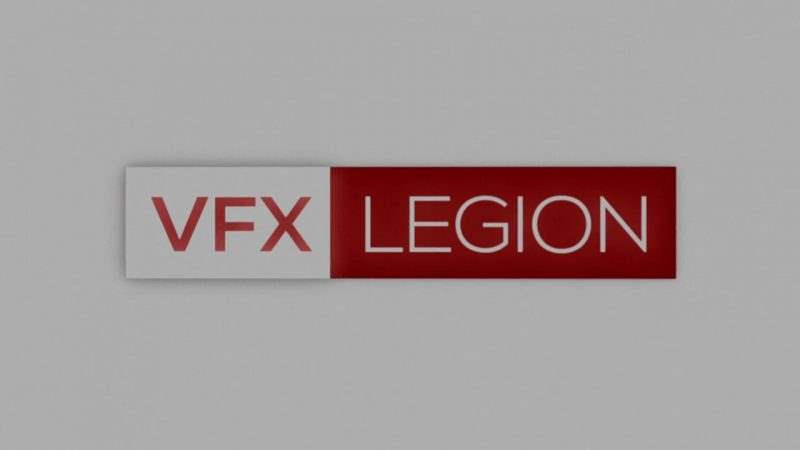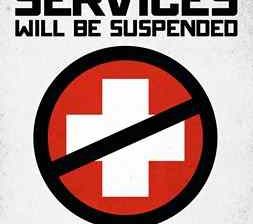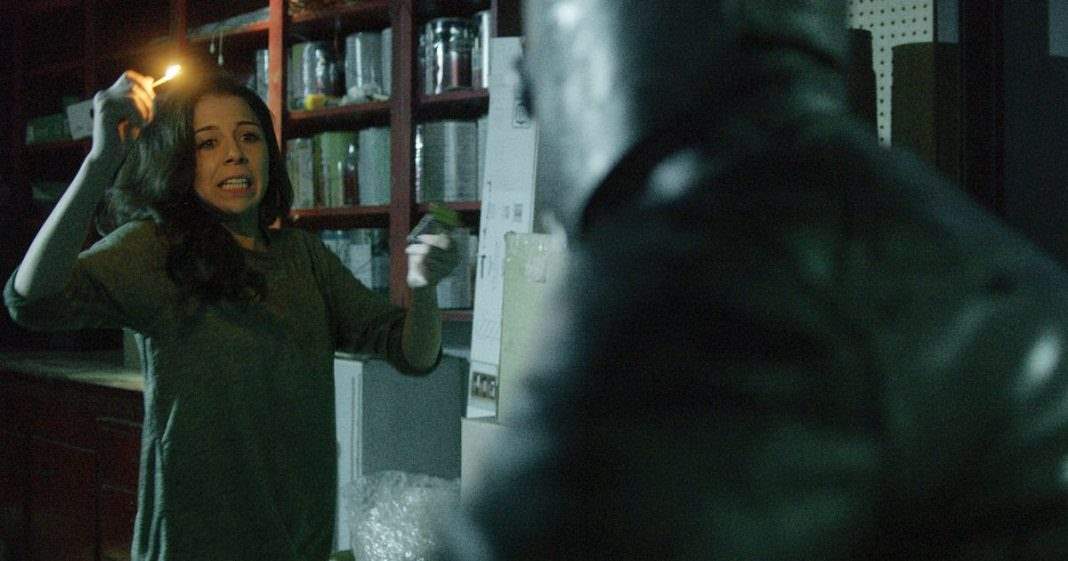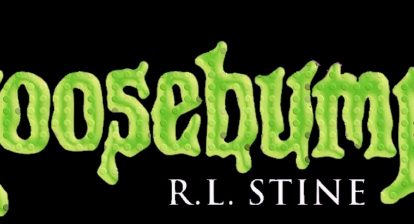VFX Legion is a visual special effects company that has worked on several of your favorite movies, including The Purge: Anarchy, The Purge: Election Year, Insidious: Chapter 3, and so much more. Their founder, James David Hattin, has been creating especially gory effects for over twenty years, but the entire company works as a collective with international talent at all levels.
Wicked Horror’s April Bennett chatted with some of the brilliant minds behind visual special effects in some of the most popular horror movies, while also delving into the unique way they do business.
Wicked Horror (WH): First, I am embarrassed to admit that, although I had seen several films–such as Insidious 3, Sinister 2, Hardcore Henry–featuring VFX Legion’s work, I was unaware it all came from the same source. of who did the work. The common component, I feel, is the realism of the work which of course in horror adds to the intensity of the scene. Is scaring the pants off audiences your main intention, or is it a side effect from focusing on the realism?
VFX Legion (VFX): We really work on the realism, if that is the goal of the director on the project. Many directors have very clear ideas about how they want things to look and what will make a really good scare. Some, like Sinister 2′s Ciaran Foy, had some great and morbid ideas about the work that was in the script. We worked very closely to make sure that the rats bursting out from someone’s insides were just the right amount of gross, while still looking real. There was a real person there on set that was covered with blood, we took the second elements of a real rat breaking through a skin-like surface and mixed the two together. Very successfully, I might add. The ghost kids at the end of the movie all had digital makeup on their faces. That;s not something that would ever be noticed as a visual effect. Realism is key. Creepy and scary are very much byproducts.
WH: When researching VFX Legion I saw that you guys have created a way to collaborate with people globally to work on projects. While this seems like a no brainer in today’s world of infinite technology, I read in an article from VFX Magazine that artists move to where the money is, but sometimes it is around the world. Why do you think your model is not a common practice in VFX work, considering access to technology?
VFX: That’s a really good question. The nomadic VFX artist is still a very common trope. It gets exhausting. When I started in visual effects in the mid ’90s, the goal was to trek all over the world and work in the big cities, and really experience that nomadic life. By the time I was good enough to actually get hired by London studios, or San Francisco studios, I was married with a kid. So, it really just became a struggle to keep working in Los Angeles, close to the home that I own. My story isn’t unique in the visual effects industry, many others experience the same issues. Early in 2001, when I lived in Sacramento and was working in Santa Monica, I devised a system that involved a lot of data duplication, but I was able to work 400 miles away and still show the director shots to sign off on, at the facility in Santa Monica. From there I just worked for more than a decade before the pieces fell into place to start Legion Studios (a.k.a VFX Legion). Much of the reason it isn’t done regularly is that people still feel that you need to fill a building in a big city with hundreds of artists to get the work done. That’s not untrue of certain types of work, but VFX Legion has been able to overcome a lot by partnering with very experienced artists. Almost all of our artists have more than 10 years experience in their field. This gives Legion the edge over many traditional VFX houses, because we use fewer artists who work faster and at a higher quality level than almost(!) anywhere else. Also, we have a global reach. We can find talent all over the world. There’s a lot of people wanting to get out of the big cities, like London and Vancouver. They would love nothing more than to live in the country and keep doing the work they love. We limit that burnout, by having people work in the their most comfortable setting. There will be more companies like us, but we will be the first that survived and got to the size that we are. There will always be guys and girls in garages doing the same kind of work, but we’ve got a pipeline to handle a substantial amount of work. Very fast internet, production managers, a QC department, and a robust back end to deliver hundreds of shots a week. It’s what really makes us different. Very little scares us, and we are always able to deliver above the expectations of the client. Smaller shops can be more cost effective because they have no back end, no servers, no software licenses to maintain, but at the end of the day, while most of our artists are located outside of the office, we still have a very conventional core of production people and artists in the facility. Which makes us a hybrid remote/local model.
WH: Switching gears to the fantastic work you guys did on Hardcore Henry, a visually stunning and exciting film, I figured this was probably one of, if not the, most difficult project to work on. Even reading how the footage was accomplished, through seamless editing of GoPro footage was giving me a headache, so I cannot imagine what that was like in person. Was Hardcore Henry the most difficult project in terms of work, time, energy, etc. for VFX Legion so far? OR, is there a project that was more of a challenge? (If so, please elaborate).
VFX: I love Ilya, the director of Hardcore Henry. Great guy to work with and has a fantastic vision. This was probably the hardest project we’ve worked on to date. Because the footage was a GoPro camera at 4K, there was a massive amount of lens distortion. The reason people love to shoot [with] GoPros for sport is that they collect a huge field of view. The problem with a huge field of view is that everything is curved. When adding things together in the final process of compositing, we need to make sure it all matches. So, all of the straight lines in our CG objects have to get distorted to match the plate. This was no easy task for us. Also, there’s a very limited color range with GoPro. It shoots in, what we call, 8-bit color space. That means, unlike FILM and professional cameras, there’s only a limited amount of changing that can be done to the color. If the sky its bright on a film image, we can generally dial it down to see the clouds that might have gotten lost in the exposure. With GoPro footage, what you see is what you get. If the sky is clipped to white, it would need to be replaced, because there is no additional data there.
We are very satisfied with the work we were able to put together for Hardcore Henry. It was a very long process, but the results really speak for themselves.

WH: We have to talk about the Spanish Inquisition rat torture scene in Sinister 2, which you touched upon briefly earlier. For me, that was the most memorable scene of the entire film and one of the goriest I have had the (dis)pleasure to behold. I am curious about the process of using VFX to make that scene seamless, especially since you were dealing with an animal and not a human actor?
VFX: That was shot in a very cinematic style. The whole movie was shot in Cinemascope. Which means that the images that come into the computer from the camera all look squished. Everyone is twice as tall. When we get it, we then widen it out to work on it, which can make a very large image. The camera in this scene did full rotations as the people lay dead with CG blood oozing out of them. It was very dynamic and surreal looking. The hot coals, if they stayed in the movie, were done by the previous vendor on the show (the first facility that worked on it before we came on) The rats and the blood were all ours. All of the bodies had some blood on them, but it looked dried and fake from the actors being on set all day. So, we made the blood look much wetter, and then started adding it running down from under the bowls. At some point the camera goes close into the side of a real human writhing on the ground, and we see the skin start to bulge and then a real rat busts out of the person’s side. Probably one of the most disturbing effects that we’ve had to do. The rat plate was an actual rat eating through something edible and rat friendly, but also with a decent amount of food-grade fake blood. So, when the rat squeezes out the hole it ate, it trails all this blood behind it. I’m not sure if it is in the final cut of the movie, but as soon as the rat gets out of the body, it does this little shake, like a wet dog, to get the blood off. It would have been cute, if we didn’t think that it was covered with someone’s entrails. There were a lot of tries to get these shots right. Brad Moylan, one of the company partners and a very experienced compositor, had to continually adjust the rat plate to make sure that it moved with the writhing person, and then separate the rat from the body as soon as it came out, so that the tracking of the writhing body didn’t translate to the rat as well. That would make it look wobbly and unconnected to the ground, which was key in selling the effect. It was truly, truly disturbing.
WH: Lastly, I see that you guys will be working on Amityville: The Awakening, so, with the talent of VFX Legion and the Amityville legacy, should audiences bring their teddy bears to clutch? Have you got anything particularly scary you can share about that project?
VFX: This was just something we did some work on a couple years ago. We are not the primary vendor on the show. It’s been in and out of reshoots for a little while. We did some very cool things, but I don’t think any of it will make it to the final movie. I imagine that there have been a lot of changes since we last worked on it, oh so long ago.






